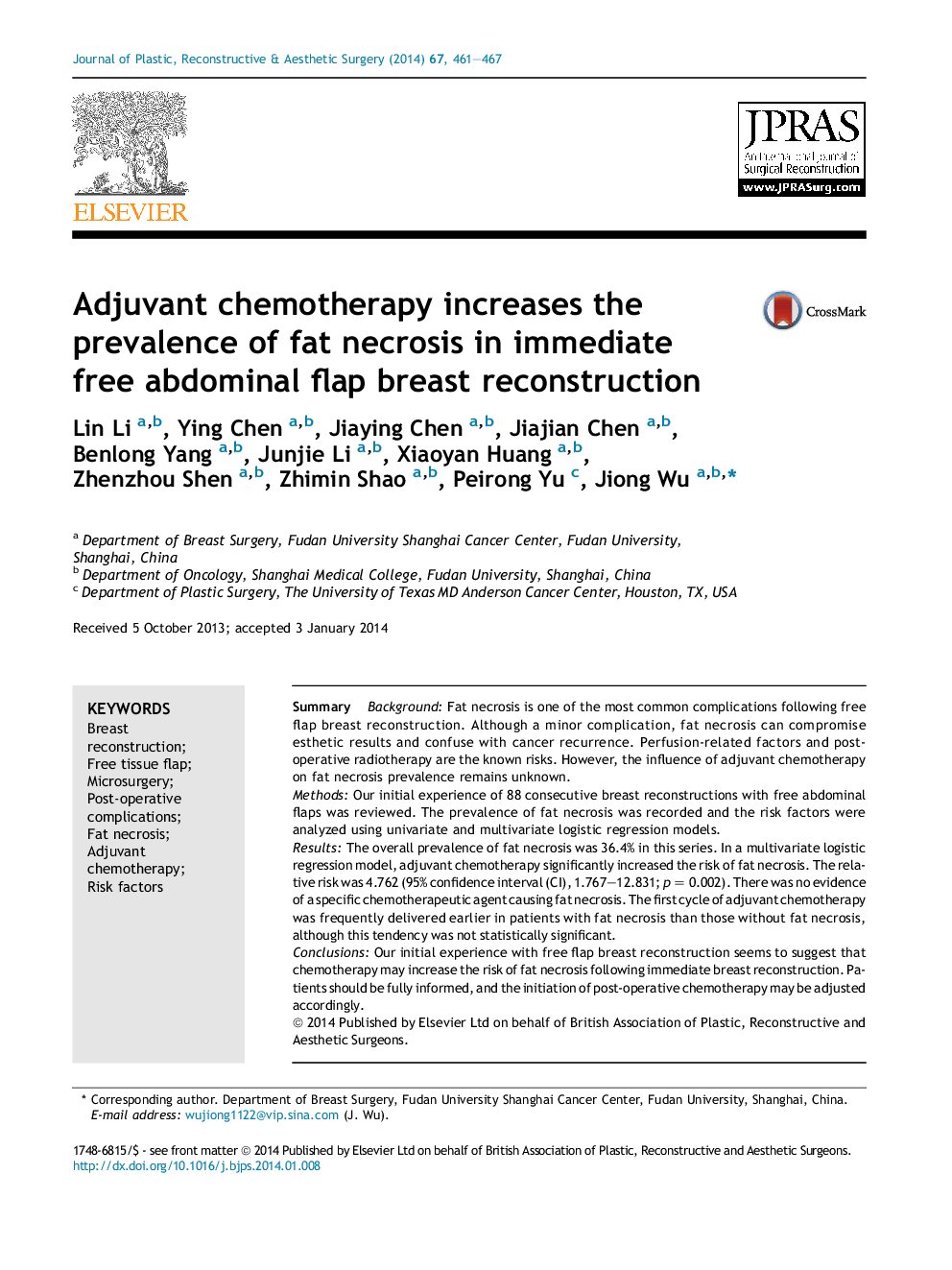| Article ID | Journal | Published Year | Pages | File Type |
|---|---|---|---|---|
| 4117873 | Journal of Plastic, Reconstructive & Aesthetic Surgery | 2014 | 7 Pages |
SummaryBackgroundFat necrosis is one of the most common complications following free flap breast reconstruction. Although a minor complication, fat necrosis can compromise esthetic results and confuse with cancer recurrence. Perfusion-related factors and post-operative radiotherapy are the known risks. However, the influence of adjuvant chemotherapy on fat necrosis prevalence remains unknown.MethodsOur initial experience of 88 consecutive breast reconstructions with free abdominal flaps was reviewed. The prevalence of fat necrosis was recorded and the risk factors were analyzed using univariate and multivariate logistic regression models.ResultsThe overall prevalence of fat necrosis was 36.4% in this series. In a multivariate logistic regression model, adjuvant chemotherapy significantly increased the risk of fat necrosis. The relative risk was 4.762 (95% confidence interval (CI), 1.767–12.831; p = 0.002). There was no evidence of a specific chemotherapeutic agent causing fat necrosis. The first cycle of adjuvant chemotherapy was frequently delivered earlier in patients with fat necrosis than those without fat necrosis, although this tendency was not statistically significant.ConclusionsOur initial experience with free flap breast reconstruction seems to suggest that chemotherapy may increase the risk of fat necrosis following immediate breast reconstruction. Patients should be fully informed, and the initiation of post-operative chemotherapy may be adjusted accordingly.
